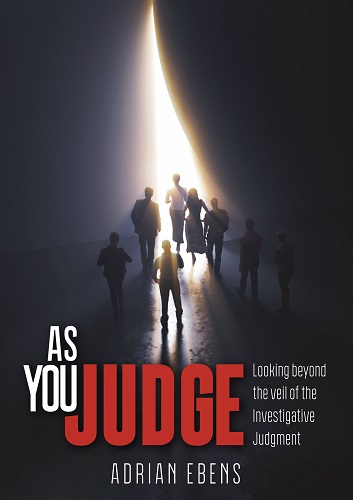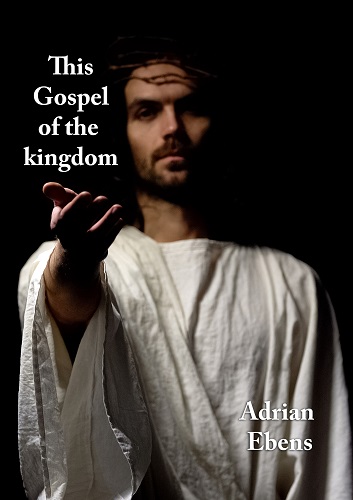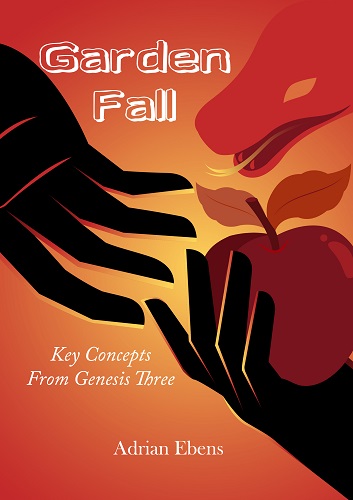Something new about the 1955, Evangelical Conferences (Again)
In 1983 Roy Allan Anderson admitted that the doctrine of the Trinity was the main and crucial doctrinal question in the Evangelical Conferences. Notice the following statement by Anderson in the Review: “‘What do you folk believe about the Trinity?’ Was a question put to me some years ago [1955] by two gracious Christian gentlemen [Walter Martin and George Cannon] who came unannounced to the General Conference headquarters in Washington, D.C....Both men were Christian college professors who had read much about Adventists, but all from detractors, and one of them was commissioned to write a new book about Adventist beliefs. However, they felt they should contact the headquarters to discover what we actually believe on points of vital interest rather than just quoting from others. The answers to their earnest questions lengthened into days of prayerful discussions. Our answer concerning the Godhead and the Trinity was crucial, for in some of the books they had read that Adventists were classed as Arians;...“We reassured the visitors when we turned first to the Scriptures, then to the 'Fundamental Beliefs' of Adventism. They discovered that we were in harmony with sound Biblical scholarship, not only on the Trinity but on every other cardinal doctrine of Christianity.” (emphasis supplied). (Adventists And The Trinity, by Roy Allan Anderson, Adventist Review, Sep. 8, 1983.)
In 1955 and 1956, two prominent Evangelicals, Walter R. Martin and Donald G. Barnhouse held a series of secret conferences with four prominent Adventist leaders: LeRoy E. Froom, Walter E. Read, T. Edgar Unruh and R. Allan Anderson. L.E. Froom, if you will remember, wrote the Trinitarian book entitled “The coming of the Comforter” (1928), and also helped misinterpret and manipulate E.G. White quotes for the compilation entitled “Evangelism” (1946). R.A. Anderson was on the committee to include a Trinitarian affirmation in the “uniform baptismal vow” (1941). Walter E. Read was the same one who helped “penknife” the anti-Trinitarian statements from the book “Daniel and the Revelation” (1945). The Evangelical theologian Walter Martin was soaring to the reputable position in the Protestant world as the “authority” on non-Christian cults. In the first printing of his book “Rise of the Cults,” (1955) he included a section about Seventh-day Adventists. This, of course disturbed some Adventist leaders (to be classified as a “cult”). Therefore, arrangements were made to thoroughly discuss the issue. The major purpose for the conferences between the Evangelicals and Adventists were: 1. For these four Adventist leaders to prove that the S.D.A. denomination should not be classified by the Evangelical Protestant world as a “non-Christian cult.” 2. For the Evangelical’s to re-classify the Seventh-day Adventist denomination from a non-Christian “Cult,” to one of the Evangelical “brethren.” However, in order to be in harmony with the Evangelical Protestant “brethren,” the Adventist beliefs concerning the Trinity, Atonement, and Nature of Christ must be in harmony with the early Catholic and Protestant creeds. The emphasis of the Evangelical conferences centered around past non-Trinitarian statements published by the Adventist Pioneers and Ellen G. White. These statements, according to Protestant theology, denied the fundamental beliefs of the early creeds (325 A.D. 381 A.D.) and were the primary reason why Adventists had been labeled a “cult.” During the meetings, Walter Martin produced a “suitcase” full of such quotations for the committee to look over. The Adventist committee of four admitted that the statements were authentic, but that the modern Adventists plainly and flatly renounce all such erroneous beliefs. One point was clear: If there was going to be unity at all, Adventists leaders had to officially and publicly repudiate all prior non-Trinitarian teachings as being erroneous and false; no matter whose pen they came from, E.G.White not excluded.
The following is the transcript from a taped conference at Loma Linda University between Walter Martin and Kenneth Samples and SDA Pastors and Seminarian Students. Campus Hill Church January 1989. Walter Martin:
“The climate at that time [1955,56], Adventism was considered like Jehovahs Wittnesses, like Mormonism, like most of the major cultic structures of the day....When I first met with L.E. Froom, he took me to task for about fifteen minuets on how I could ever possibly think that Adventism was a cult. Adventism rings as true as steel. I said, ‘do you think Arius was a Christian?’ And he was an excellent church historian and he said, ‘of course he wasn’t a Christian, he denied the deity of Jesus Christ’. I said, so did Ellen White. Dr. Froom said, What! I said yes and then I produced the quotations, and I opened up a suitcase and produced at least twelve feet of Adventist publications stacked up and marked for Dr. Frooms perusal. And for the perusal of the committee to check the sources in there. And they found everything I said was there was there. And they were in mortal shock I might add, to think that it was as pervasive as it was. Mrs. White reversed herself later on very quickly, and affirmed the doctrine of the trinity very strongly and taught it. But she was influenced by Uriah Smith. She did deny the eternal deity of Christ at one time and relegated Him to the place of a second deity. That’s why you were classified with the Jehovahs wittnesses early on, because of the Arian emphasis in Adventism. And because of the fact that you affirmed Michael the Archangel to be Christ. Dr Froom and the committee decided that they would peruse this material immediately. So we adjourned the meeting and they took all the material with them and I guess others, and went through the materials. They came back and said, well, a great deal of these things you’re calling attention to are there, we agree, and we don’t agree with those statements. They do not reflect orthodox Adventist theology, and we reject it. I said, good, happy to hear that, now can you fault us, because we read this material and it’s not peripheral issues we are talking about.”...”We went through all kinds of materials and then the idea came for a book where we would question and the Adventist denomination would respond...Out of that came the book called Questions on Doctrine. Contrary to some of the fantasies and myths which I hear today from Adventists who aught to know better, the book had the approval of the General Conference.”
We all know what has happened since these conferences in 1955-1956. What you probably don't know is thirty-seven years before these conferences another man wrote a book exposing non-Christian cults. His name was John Elward Brown, and he wrote the book entitled "In The Cult Kingdom" in 1918. Yet, unlike Walter Martin who included Adventism in his first printing as a cult, Brown claims Adventism is entirely orthodox regarding "the Deity of Christ" and the "Personality of the Holy Spirit"
Brown writes: "In a certain city, a very Godly man came to me with the request that I include 'Seventh-Day Adventism' in this series announced for review, and seemed incredulous when I told him the Church of Jesus Christ had no fight to make on 'Seventh-Day Adventism.' There are no fundamental grounds of disagreement between the organized church of Christ and the 'Seventh-day Adventist.'...On all the cardinal doctrines of the Bible--the Miraculous Conception, and the Virgin Birth, the Crucifixion, Resurrection and Ascension, the Deity of Christ, the Atonement of Christ, and the Second Coming, the Personality of the Holy Spirit, and the Infallible Bible, the Seventh-Day Adventist rings as true as steel...When you walk up in the presence of Mormonism, Eddyism and Russelism, you walk up into the presence of that which has strange theories to present--strange doctrines to promulgate,--all but literally, a 'new' God to worship." (pp. 7-8) (book date found here ) (referenced in Australasian Record, pg 2.)
Several questions arise from Brown's confession of SDA orthodoxy. Where did Brown get his information regarding Adventist teaching about "the Deity of Christ" and "the Personality of the Holy Spirit?" Did he have an Adventist friend? Did he read "The Desire of Ages" and was convinced that Adventism was Trinitarian? SDA church historians admit that Adventism was still considered non-trinitarian well into the 1940's and 1950's. Walter Martin sure thought so when he published "Rise of the Cults" in 1955. The first statement of belief that even included the term "Trinity" was not until 1931. So how would John Brown in 1918 be so confident of SDA's Trinitarian orthodoxy? Why wouldn't he include them in his book on cults in-spite of earnest protest? I don't have the answers, yet there are some clues.
Although many would call it coincidence, the following fact is pretty ironic. Brown writes concerning all fundamental Christian doctrines: "the Seventh-Day Adventist rings as true as steel." Remember what L. E. Froom said to Walter Martin in 1955? "When I first met with L.E. Froom, he took me to task for about fifteen minuets on how I could ever possibly think that Adventism was a cult. Adventism rings as true as steel." My guess is that before Brown wrote his book he had personally met with Froom or another like-minded Adventist leader who had convinced him that SDA's were Trinitarian. Froom would have been about 28 years old in 1918.
The following are a couple of other interesting facts about John Brown. He was the author of several other books including "The Holy Spirit." Brown was good friends with R. A. Torrey. Brown was also the president of the "international Association of Christian Workers," while Torrey was the Chairman of the same. Another thing that Brown, Torrey and Froom have in common is they all wrote extensively about the "Personality of the Holy Spirit." The following quotation is from Froom’s book “Coming of the Comforter,” p. 40: “If He [the Holy Spirit] is a divine person, and we think of Him as an impersonal influence, we are robbing a divine person of the deference, honor, and love that is His due. Again, if the Holy Spirit is a mere influence or power, we shall try to get hold of and use it. But if we recognize Him as a person, we shall study how to yield to Him, that He may use us.” (emphasis supplied). Interestingly enough, L.E. Froom plagiarized this precise concept from R. A. Torrey's book titled “The Fundamentals” (see Vol.1. p.55). W. A. Spicer commented about why Brown hadn't included Adventism in his book.
It makes you wonder why all the SDA church historians and scholars who have written extensive apologetic works regarding how the denomination became Trinitarian, would not include such an important piece of evidence. They could easily make the claim, "see, the church was fully Trinitarian way back in 1918 when John Brown wrote his book." Something tells me that there is more to the story that W. A. Spicer and other historians want to admit.





